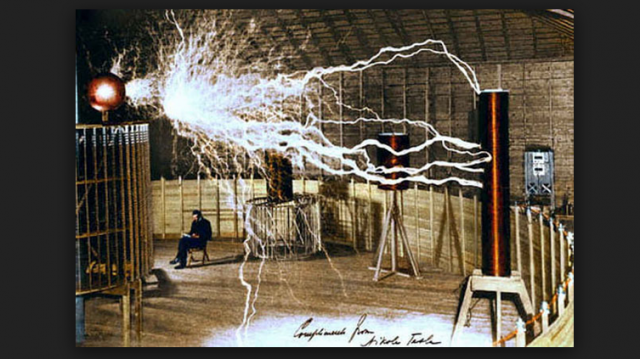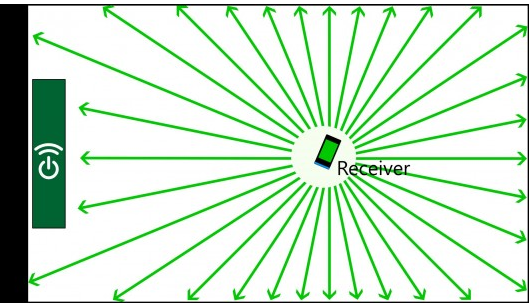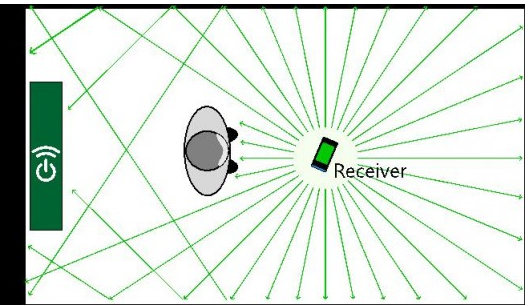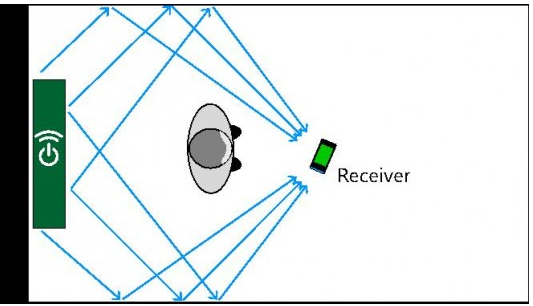
At TechCrunch Disrupt San Francisco 2013, Ossia Inc. CEO, Hatem Zeine, demonstrated his company’s breakthrough product by wirelessly recharging a smartphone. But this isn’t the usual charging mat, this is Cota.
Cota is the wireless charging technology that the smartphone industry and its customers has been craving. It can charge a device that is equipped with an appropriate receiver from 9 metres away. It doesn’t require line of sight, it can follow the device around and can charge multiple devices at once. Ossia envisions their technology built not just into smartphones and tablets, but also remote controls, flashlights, wireless keyboards and mice, digital cameras, game controllers – any low power device.
We have been developing the Cota technology in stealth for the last six years,” said Zeine. “By revealing for the very first time real wireless power that is remote, efficient and safe, Ossia expects to change everything you think you know about wireless power. Cota will unleash the imagination of product designers and entrepreneurs globally to innovate and create new products that only exist in a completely wireless state – one that is always on and always ready.”

To achieve these goals, Zeine says that once miniaturised, Cota can be incorporated into phone motherboard chips, or normal batteries that can be easily retrofitted into existing devices. For your current smartphone, Zeine demonstrated a dongle that plugs into your charging port, that once made small enough could be built into a case.
The way that Cota works is that you have a receiver in your device, and a transmitter situated in a central location of your home.

The receiver sends out a signal at 100 times a second, which is picked up by the microwave power transmitter that operates on the same frequencies and power output of a Wi-Fi router. There will be 20 000 individually steerable phased-array antennae in the production version of the transmitter that determines the strongest path and bounces power back specifically to the devices for charging. The transmitter currently sends 1 watt of power, but the level of power in the final product could be higher.
Cota avoids people, pets, plants – anything that absorbs energy – simply because of the physics involved. The power that the transmitter sends out goes straight back to the receiver via the strongest path, and if a person is in the way absorbing a tiny portion of energy from the receiver, then the transmitter will bounce the power off the walls and around the obstruction.


Cota is inherently safe because of the very low power levels involved, and the reversed power characteristics of the transmitter sending waves around biological objects, directly focusing the power on the devices that need charging. There is just as much energy being sent out from a Wi-Fi router, on top of transmissions flowing around us everyday for the last 60 years and more in the form of radio and television broadcasts.
Ossia anticipates that the transmitter should retail for around $120, and will bring the system to market by licensing the technology to manufacturers for inclusion in their own products. They expect Cota to be available in 2015.
Here is the presentation that Hatem Zeine gave at TechCrunch Disrupt SF 2013, demonstrating Cota.
What do you think about the future of wireless power in your home? Excited or concerned?





Sounds good but I’d like to know how much more energy it’s going to use. I’ve read the current wireless chargers Qi and the like use more power than a physical connection so I can only guess these would use even more.
Good point. Even tesla whom is worshiped in the tech world, discovered that. you will always pump out less than what you put in. there are too many variables!
I feel like its Aprils fools day. This is a real breakthrough.
see how long it takes to charge avg phone in a review before I buy it.
That’s the beauty of it, it can be slower because your charging your phone from the minute you walk in the door until you walk out!
Exactly Stormjr! That is the beauty of it. As soon as you walk within range then the device automatically starts to charge. It is even envisioned that devices that live in your home, like remote controls, don’t even have to have a battery – they just get the needed energy from the transmitter.
I understand the benefits for batteryless remotes etc but would it not affect the durability of your battery if its constantly charging. Between work and home batteries would never go through a complete charge/drain cycle. It would be great in a vehicle on long trips or camping with a generator &holidays(no need for multiple adaptors).
A modern Lithium-Ion battery in a smartphone has a lifetime of approximately 500 full cycles. A full cycle is from 100% full to empty.
Constantly topping up the battery is actually encouraged by the manufacturers as Lithium-Ion batteries prefer this.
More modern batteries, such as Lithium Polymer that are in the Nexus 4 should last 750 cycles, and also appreciate constant topping up as opposed to a constant full cycle 100% to 10% regime.
Agreed. And most do always top up these days because they barely last a day. In my experience though, batteries do benefit from a complete drain and full charge every month or so. Sometimes I can gain an extra hour or so. And lithium polymers have been around for ages. Nokia 6210/6310 & Ericsson T28/29 to name a few had them years ago.
The advantage as I see it is that it extends the length of a battery charge. If I’m at home or at work then my battery may last twice as long even if I use it the same amount of time without ever having to plug it in.